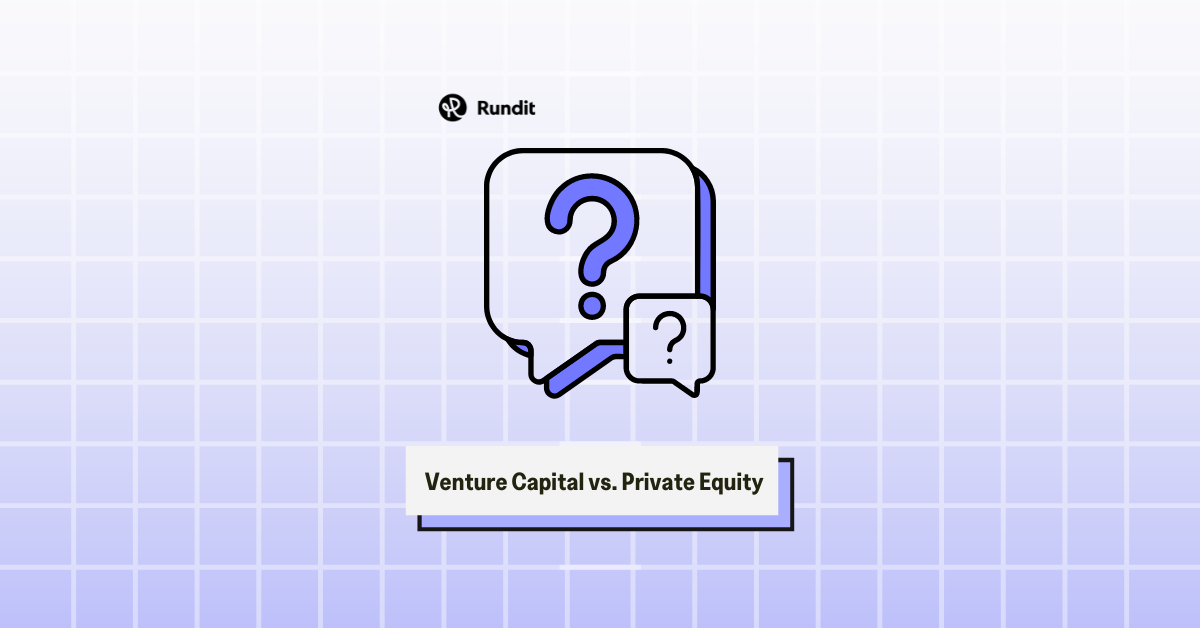Private equity (PE) funds and venture capital (VC) funds play crucial roles in the investment landscape, both aiming to generate returns by investing in companies. However, they approach this goal through different methods, targeting various stages of a company’s development and employing unique strategies. In this blog, we will explore the key differences between private equity and venture capital, shedding light on how each contributes to the growth and evolution of businesses in distinct ways. Join us as we navigate these two dynamic fields and uncover what sets them apart.
1. Stage of Investment
- Venture Capital Funds:
- Early Stage: VC funds typically invest in early-stage companies, including startups that are in their seed, Series A, B, or C funding rounds.
- High Growth Potential: The companies are usually young, innovative, and have high growth potential but are not yet profitable. These businesses often operate in emerging sectors like technology, biotechnology, or other high-growth industries.
- Private Equity Funds:
- Later Stage: PE funds usually invest in more mature companies that are already established. These companies may be undervalued, underperforming, or have a strong potential for improvement or growth.
- Profitability: The companies are often cash-flow positive and may have predictable revenue streams. PE investors look for businesses where they can generate returns through strategic management, cost-cutting, and other efficiency improvements.
2. Investment Size and Structure
- Venture Capital Funds:
- Smaller Investment Size: The investments are generally smaller, ranging from a few hundred thousand to several million dollars per investment, depending on the stage of the company.
- Minority Stake: VCs usually take a minority equity stake (10-30%) in the companies they invest in. They often seek to maintain a good relationship with founders and help them grow the business.
- Private Equity Funds:
- Larger Investment Size: PE investments are usually much larger, often in the range of tens to hundreds of millions, or even billions, of dollars.
- Majority Control: PE funds usually buy a controlling or majority stake (often more than 50%) in a company. They may use leverage (debt) to finance the acquisition, leading to leveraged buyouts (LBOs).
3. Investment Strategy and Focus
- Venture Capital Funds:
- High Risk, High Reward: VC funds are focused on high-risk, high-reward opportunities. They invest in companies with the potential for exponential growth but also a high chance of failure.
- Industry Focus: VCs tend to focus on innovative and disruptive industries, like tech, healthcare, or clean energy. They often provide strategic guidance, mentorship, and networking opportunities to help companies grow.
- Private Equity Funds:
- Operational Improvement and Efficiency: PE funds are often focused on more predictable, lower-risk investments. Their strategy typically involves making operational improvements, restructuring, expanding market reach, or optimizing the capital structure of the company.
- Broader Industry Focus: While they may have sector preferences, PE funds are less focused on specific industries than VCs and might invest in a wide range of sectors, including traditional ones like manufacturing, retail, and financial services.
4. Time Horizon and Exit Strategy
- Venture Capital Funds:
- Longer Investment Horizon: VC funds often have a longer time horizon, typically 5-10 years, as they wait for the company to mature and either go public (IPO) or be acquired.
- Exit via High Growth: Their exit strategies include IPOs, mergers and acquisitions (M&A), or selling their stake to another investor, ideally at a significant premium.
- Private Equity Funds:
- Shorter Investment Horizon: PE funds usually have a shorter time horizon, typically 3-7 years. They aim to realize returns through strategic exits like sales to other companies, secondary buyouts, or public offerings.
- Exit via Cash Flow or Sale: They may also rely on the improved cash flows of the acquired company or the sale of assets to generate returns.
5. Role in Management and Operations
- Venture Capital Funds:
- Advisory Role: VC investors typically act more as mentors or advisors. They provide strategic guidance, introduce key contacts, help in hiring, and assist with scaling the business but usually do not interfere heavily in day-to-day operations.
- Private Equity Funds:
- Active Management: PE investors often take a very hands-on approach, frequently installing new management teams, altering business strategies, or cutting costs. Their goal is to make the company more profitable and increase its value over the investment period.
6. Use of Leverage
- Venture Capital Funds:
- Minimal Leverage: VC funds rarely use debt to finance investments. Their investments are equity-based, and they typically avoid loading portfolio companies with debt since these companies are in growth mode and need capital for expansion.
- Private Equity Funds:
- Significant Leverage: PE funds often use leverage (debt) to finance a significant portion of their acquisitions, a strategy known as a leveraged buyout (LBO). This allows them to maximize returns on equity by using borrowed funds.
7. Investor Profile and Risk Tolerance
- Venture Capital Funds:
- Higher Risk Tolerance: VC investors are generally more risk-tolerant and are willing to invest in companies with uncertain prospects in exchange for potentially higher returns.
- Longer-Term Focus: Their investors, typically institutional investors, high-net-worth individuals, or family offices, are usually comfortable with a longer-term, high-risk investment approach.
- Private Equity Funds:
- Lower Risk Tolerance: PE investors tend to be more conservative and prefer companies with stable cash flows and less risky profiles.
- Focus on Consistent Returns: They often target more consistent returns through operational improvements and strategic management.
Summary
- VC focuses on early-stage, high-growth potential companies with a high-risk, high-reward strategy, often with smaller investments and a longer time horizon.
- PE targets mature companies with existing revenue and profits, aiming for operational efficiency and strategic growth using larger investments and often leveraging debt, with a shorter time horizon.
Conclusion
Private equity (PE) and venture capital (VC) funds play crucial roles in the growth and transformation of companies, albeit in different ways. While VC focuses on nurturing early-stage, high-growth potential companies, PE targets more mature companies with existing revenue and profits, seeking to enhance operational efficiency and strategic growth. Understanding the key differences in their investment stages, sizes, strategies, and risk tolerance is essential for both investors and entrepreneurs as they navigate the financial landscape.
Given these differences, having the right tools to manage and analyze investments is vital. Rundit offers a comprehensive solution tailored to the needs of both venture capital and private equity firms. Our platform provides intuitive dashboards, advanced data visualization, and a centralized data source to streamline portfolio management and enhance decision-making.
Whether you’re dealing with the high-risk, high-reward dynamics of venture capital or the operational focus of private equity, Rundit equips your team with the tools necessary to thrive. Don’t let the complexities of managing diverse investments hold your firm back—contact our experts today to learn how Rundit can empower your investment strategy and help you succeed in this competitive environment.
Additional resources:
McKinsey & Company insights on investment strategies of VC and PE funds 🔗 – McKinsey & Company
Private Equity Vs. Venture Capital: Which Is Right For Your Startup? 🔗 – Forbes
Private equity vs. venture capital: What’s the difference? 🔗 – Pitchbook
Streamline Your Portfolio Management Process
Consolidate your portfolio and fund data in one single platform. One source of truth for your team’s investment data.

